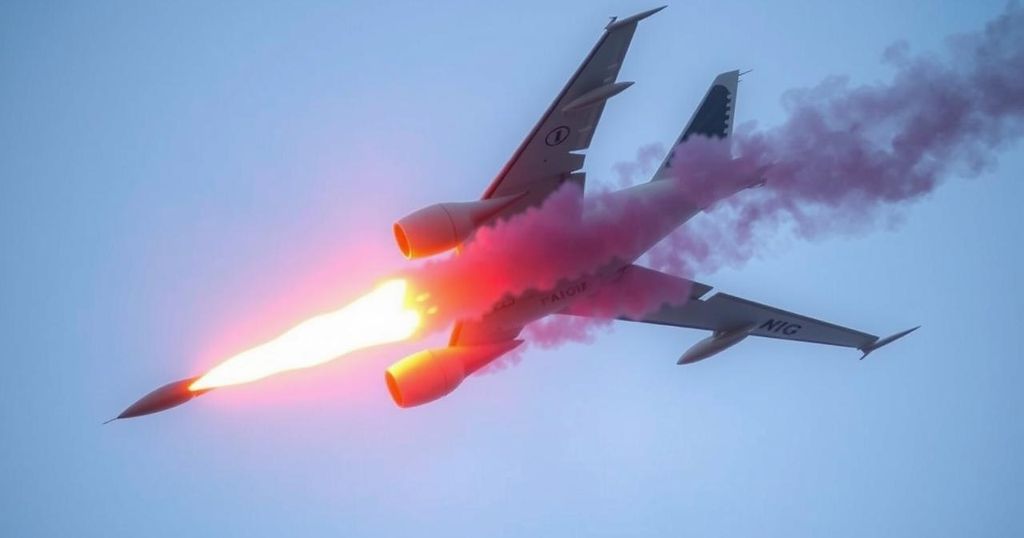Azerbaijani officials suspect that a Russian missile brought down an Azerbaijani passenger plane, resulting in 38 fatalities. The Embraer 190 deviated from its path and crashed near Aktau, Kazakhstan, with indications suggesting missile involvement. Investigations are ongoing as reactions emerge from the Kremlin and various governments in the region.
A tragic incident occurred when an Azerbaijani passenger jet crashed near Aktau, Kazakhstan, resulting in the death of 38 individuals among the 67 aboard. The aircraft, an Embraer 190, deviated significantly from its intended route from Baku to Grozny on Wednesday and is suspected to have been struck by a Russian surface-to-air missile. While initial accounts suggested it encountered a flock of birds, this assertion was later retracted, and investigation efforts are now focused on missile involvement, with reports suggesting potential shrapnel damage reminiscent of past attacks. The Kremlin has responded cautiously, urging against premature conclusions prior to the completion of the investigation.
The crash of the Azerbaijani passenger airplane has opened discussions regarding the geopolitical tensions in the region, particularly with Russia’s involvement in air defense operations. Historical incidents, such as the downing of Malaysia Airlines Flight MH17 in 2014, have heightened sensitivities around the use of military-grade weapons in civilian airspace. The proximity of ongoing military activities related to Ukraine may have impacted the safety of commercial flights in surrounding areas, thereby necessitating a thorough investigation to ascertain the circumstances leading up to the crash.
In summary, the downing of the Azerbaijani passenger plane raises serious safety concerns for air travel in regions affected by military conflict. As investigations continue, the implications of international airspace security and accountability in military operations can hinder future civil aviation endeavors. The loss of life in this tragedy profoundly affects families and highlights the need for improved protection of civilian air traffic amidst heightened military tensions.
Original Source: www.wfxg.com






